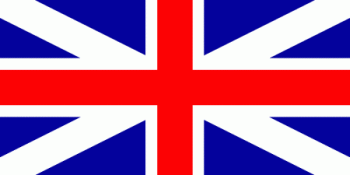Articles
Articles written by Branch Members
- The United Empire Loyalists by Gene Aitkens UE
- A Brief History of the UEL Association by Gene Aitkens UE
- Butler's Rangers by Harold F. Morgan UE
- Christian Riselay/Hannah Schauer by Harold F. Morgan UE
- Hendrick Windecker by Harold F. Morgan UE
- Adam Young by Robert Collins McBride UE
- Daniel Young by Dr. David Faux
- Christian Keller by Maralynn Wilkinson UE
- James Peters by Mary Sandford UE
- Christian Hennigar by Carl Hennigar UE
- Pvt Jacob Teague by David B. Clark UE
- Pvt Joseph Goodwillie by David B. Clark UE
- Ensign Adam Green UE by David B. Clark UE
- The Butler's Rangers Uniform by David B. Clark UE
- Baking and Cooking in the 18th Century by David B. Clark UE
Daniel Young
Daniel Young, the son of Adam Young and Catherine Elizabeth, née Schremling, was born in 1749 or 1755 (the records differ on the date) in the Canajoharie region of the Mohawk valley, New York. When he was a boy the family moved to Youngsfield. Young's Patent, south of the Mohawk River.
While specific details on the early life of Daniel are not known, it may be that, at the time when he was forced to escape the clutches of the rebel "mob", he was working as a farm hand for his brother John or his uncle Frederick. In March 1777, the three of them escaped imminent imprisonment by the rebels, and joined the British forces. Attached to the Indian Department, Daniel served as a ranger during the siege of Fort Stanwix and the Battle of Oriskany. With the formation of Butler's Rangers in September 1777, Daniel became a sergeant, first in the company of Captain William Caldwell, then in the company of Rangers led by Captain Peter TenBroeck; he served throughout the war until the Rangers were disbanded in 1784.
Daniel married Elizabeth Windecker ca. 1782. Two years later he went with his father and brothers, John and Henry, to live along the Grand River, at the invitation of the Six Nations Indians. His house stood directly opposite the lower end of Young's Island (later called Thompson's Island) on the north bank of the Grand River, near present day Cayuga.
Those disbanded soldiers who were living on the Grand River, and were not married to Six Nations Indian women, began to feel insecure about titles to their farms (999 year "Brant Leases"), fearing that at any time they would be ordered to leave the Indian reservation. For this reason, Daniel moved in the spring of 1795 to take up residence on land in Barton Township which had been granted to his wife-as the daughter of a Loyalist, and to himself-as a sergeant. The Young house was erected on Lot 13, Concession 8, on a rise above the spot where Red Hill Creek emerges as a spring from the embankment.
Daniel farmed 200 acres near Ryckmans's Corners with the assistance of his large family, and he took care of his blind, widowed mother. He was a founding member and treasurer of the Barton Masonic Lodge; a participant in the first public library committee of Barton, organized on February 5, 1798; an original member of the Barton Branch of the Hamilton Presbytery; the township assessor and a captain of the 5th Lincoln Militia during and after the War of 1812. He signed his last will on November 17, 1834 and died in 1836. Most probably he was buried in either the Smith family cemetery at Ryckman's Corners or, in Old St. Peter's Burying Ground on Mohawk Road.
by Dr. David Faux

